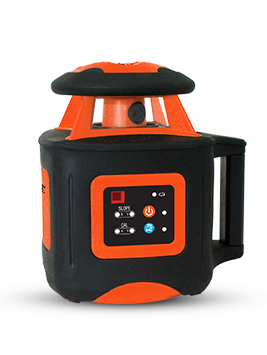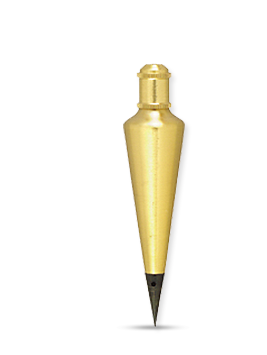All About Theodolites

Theodolite vs Transit
How to Use a Theodolite
How a Theodolite Works
Types of Theodolites
There are two different kinds of theodolites: digital and non digital. Non digital theodolites are rarely used anymore. Digital theodolites consist of a telescope that is mounted on a base, as well as an electronic readout screen that is used to display horizontal and vertical angles. Digital theodolites are convenient because the digital readouts take the place of traditional graduated circles and this creates more accurate readings.
Parts of a Theodolite
Like other leveling instruments, a theodolite consists of a telescope mounted on a base. The telescope has a sight on the top of it that is used to align the target. The instrument has a focusing knob that is used to make the object clear. The telescope contains an eyepiece that the user looks through to find the target being sighted. An objective lens is also located on the telescope, but is on the opposite end as the eyepiece. The objective lens is used to sight the object, and with the help of the mirrors inside the telescope, allows the object to be magnified. The theodolite's base is threaded for easy mounting on a tripod.
How Does a Theodolite Work?
A theodolite works by combining optical plummets (or plumb bobs), a spirit (bubble level), and graduated circles to find vertical and horizontal angles in surveying. An optical plummet ensures the theodolite is placed as close to exactly vertical above the survey point. The internal spirit level makes sure the device is level to to the horizon. The graduated circles, one vertical and one horizontal, allow the user to actually survey for angles.
How to Use a Theodolite

- Mark the point at which the theodolite will be set up with a surveyor’s nail or a stake. This point is the basis for measuring angles and distances.
- Set up the tripod. Make sure the height of the tripod allows the instrument (the theodolite) to be eye-level. The centered hole of the mounting plate should be over the nail or stake.
- Drive the tripod legs into the ground using the brackets on the sides of each leg.
- Mount the theodolite by placing it atop the tripod, and screw it in place with the mounting knob.
- Measure the height between the ground and the instrument. This will be used a reference to other stations.
- Level the theodolite by adjusting the tripod legs and using the bulls-eye level. You can make slight tunings with the leveling knobs to get it just right.
- Adjust the small sight (the vertical plummet) found on the bottom of the theodolite. The vertical plummet allows you to do ensure the instrument remains over the nail or stake. Adjust the plummet using the knobs on the bottom.
- Aim the crosshairs in the main scope at the point to be measured. Use the locking knobs on the side of the theodolite to keep it aimed on the point. Record the horizontal and vertical angles using the viewing scope found on the theodolite’s side.
Theodolite vs Transit Level
A theodolite is a precision instrument used for measuring angles both horizontally and vertically. Theodolites can rotate along their horizontal axis as well as their vertical axis. Theodolites have a lot in common with transits.
A transit is a surveying instrument that also takes accurate angular measurements. Along with the transit, theodolites have mounted telescopes that can be rotated in different directions. Both theodolites and transits can be used for similar projects, but there are slight differences between the two instruments. Transits use vernier scales and external graduated metal circles for angular readings. Theodolites use enclosed graduated circles and angular readings are taken using an internal magnifying optical system. Theodolites tend to have a more precise reading and provide greater accuracy in measuring angles than transits do.
Theodolites are mainly used for surveying, but they are also useful in these applications:
- Navigating
- Meteorology
- Laying out building corners and lines
- Measuring and laying out angles and straight lines
- Aligning wood frame walls
- Forming panels
- Plumbing a column or building corner
Advantages of Using a Theodolite
Theodolites have many advantages when compared to other leveling instruments:
- Greater accuracy.
- Internal magnifying optical system.
- Electronic readings.
- Horizontal circles can be instantly zeroed or set to any other value.
- Horizontal circle readings can be taken either to the left or right of zero.
- Repeat readings are unnecessary.
Theodolites have an internal optical device that makes reading circles much more accurate than other instruments. Also, because the theodolite allows you to take fewer repeat readings, these measurements can be made much more quickly. Theodolites with optical instruments have advantages over other layout tools. They have more precise measurements, they are unaffected by wind or other weather factors, and they can be used on both flat ground and sloped ground.
Caring For a Digital Theodolite and Helpful Hints
Like other instruments, theodolites require proper care and maintenance to ensure the best results and reduce wear and tear on the instrument.
- Do not submerge instrument in water or any other chemical.
- Do not drop instrument.
- Make sure theodolite is locked in its case while transporting.
- When raining, use cover over instrument.
- Do not look directly into the sunlight through the telescope on the instrument.
- Using a wooden tripod can protect the instrument from vibrations better than an aluminum tripod would.
- Using the sunshade attachment is important; any sudden temperature changes can cause incorrect readings.
- Never hold the instrument by the telescope.
- Always have a substantial level of battery power on your instrument.
- Always clean the instrument after using.
- Dust in the case or on the instrument can cause damage.
- If the theodolite is damp or wet, allow it time to dry out before storing it in its case.
- When storing, make sure that the telescope on the instrument is in the vertical position.
- When the theodolite is being re-leveled, the position over the ground point must be checked and rechecked to ensure the same position.
- When the theodolite is being repositioned over a ground point, the level must be checked and rechecked to ensure its accuracy.
If you’d like more how-to information, visit Johnson Level’s complete list of how-to guides for tools and levels.
View theodolites, builder's levels and other optical instruments.
©2015 Johnson Level & Tool Mfg. Co., Inc.

































